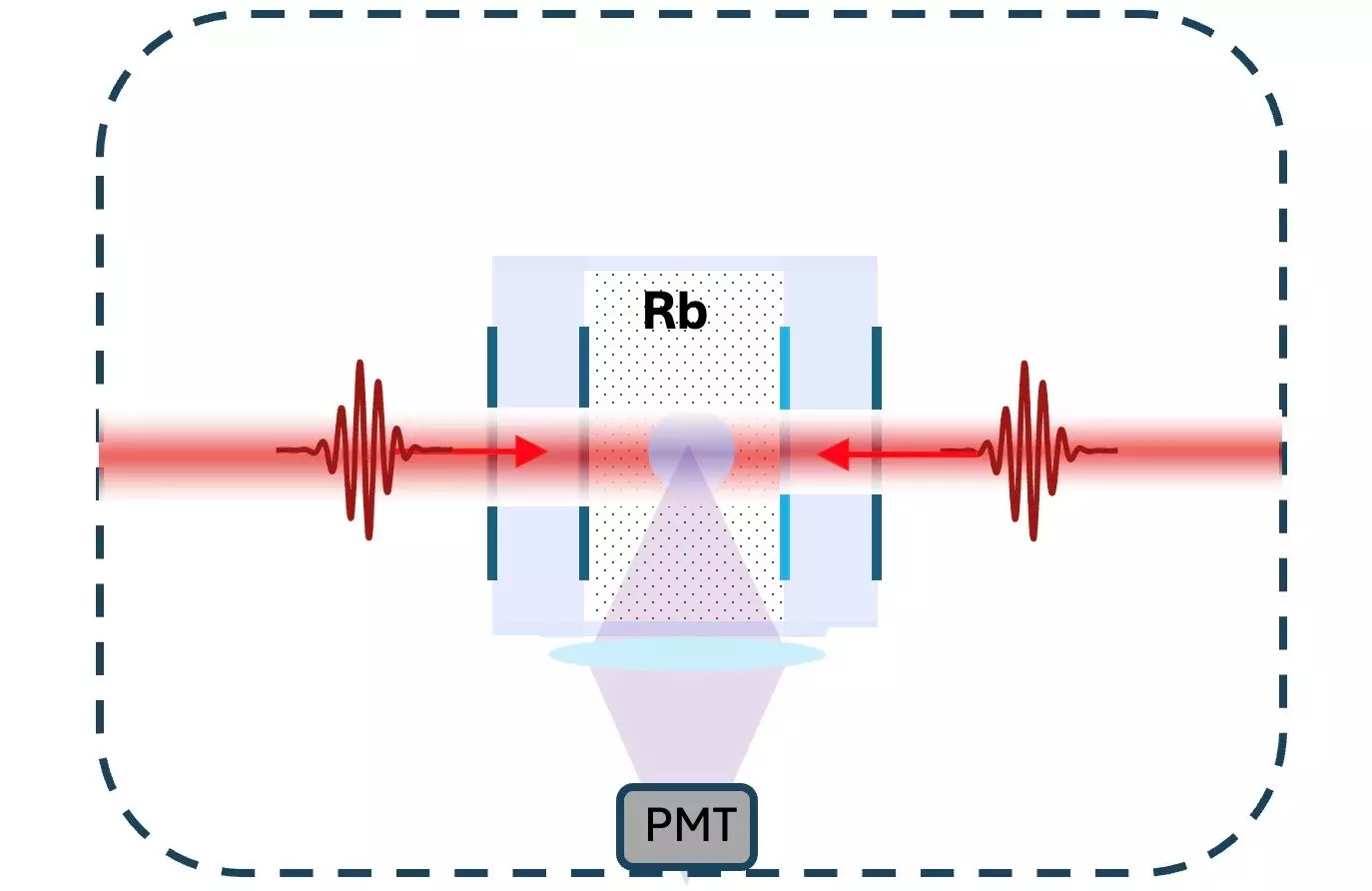In the realm of precise timekeeping, atomic clocks have long defined the standard. These sophisticated devices leverage the natural oscillations of atoms to measure time with exceptional accuracy. However, traditional atomic clocks typically require significant infrastructure, such as multiple lasers and cryogenic temperatures, which limit their portability and practicality for everyday use. Recent advancements in optical atomic clock technology, particularly a novel design that utilizes a single laser and operates at ambient temperatures, promise to change this narrative dramatically.
A Leap Forward in Atomic Clock Design
Research led by Jason Jones at the University of Arizona has made significant strides in simplifying the design of optical atomic clocks. The team’s innovative approach utilizes a single frequency comb laser, serving dual functions: it acts both as the clock’s pendulum and as the gearwork for tracking time. This remarkable simplification potentially extends atomic clock capabilities beyond laboratory confines, fostering a shift toward high-performance clocks that require minimal housing and energy.
The breakthrough revolves around the frequency comb—a breakthrough laser technology capable of emitting a spectrum of light at precisely spaced intervals. Jones and his colleagues describe their findings in the journal *Optics Letters*, showcasing a new optical atomic clock that directly excites rubidium-87 atoms via a two-photon transition. This method effectively retains the timing performance akin to that of traditional atomic clocks, which usually rely on more complex setups involving multiple lasers.
The Role of Frequency Combs in Timekeeping
Understanding the mechanics of frequency combs is essential for appreciating their significance in this breakthrough. By harnessing thousands of frequencies occurring simultaneously, these lasers create an elegant solution to the limitations posed by single-color lasers often used in conventional atomic clocks. The challenge with traditional designs is that they necessitate extreme cooling systems that limit the clock’s operational practicality.
The new clock design cleverly sidesteps these challenges. By employing two-photon transitions, Jones’s team found that sending photons from opposing directions allows for motion-induced frequency shifts to effectively cancel each other out. This innovative adjustment permits the use of hot atoms—in this case, rubidium-87 at temperatures around 100°C—without compromising the clock’s accuracy. This move towards higher operating temperatures greatly increases accessibility, paving the way for compact, portable atomic clocks.
The implications of this research extend far beyond mere timekeeping; they have the potential to enhance global positioning systems (GPS) and telecommunications. Seth Erickson, the first author of the research paper, posits that by improving the reliability and availability of atomic clocks, the precision of GPS networks could be significantly elevated. High-quality atomic clocks underpin satellite communications, and enhancing their performance could yield a more reliable navigation system.
In telecommunications, the introduction of portable atomic clocks could allow the rapid switching of data streams across the same channels, vastly improving the ability for simultaneous communications among multiple users. This innovation could lead to greater bandwidth utilization, enabling higher data rates and more efficient networks.
The research team performed rigorous tests comparing their new atomic clock design with traditional approaches. Remarkably, they achieved instabilities of 1.9 × 10^-13 at one second, demonstrating comparable precision to existing systems. Furthermore, at the 2600-second mark, the averaging instabilities dropped even further, underscoring the clock’s remarkable performance.
Despite these successes, the researchers are mindful of the need for continuous improvement. Plans are in place to enhance the design further, emphasizing miniaturization and stability over extended periods. Harnessing new advances in laser technology will likely facilitate these enhancements, allowing for even more robust applications of the direct frequency comb approach in various two-photon atomic transitions.
The development of this innovative optical atomic clock signifies a monumental step in the field of timekeeping. By simplifying the mechanisms and reducing reliance on cryogenic temperatures, researchers are not only making atomic clocks more accessible but also expanding their application into everyday technologies. As this technology matures, we stand on the brink of fundamentally changing how we perceive and utilize time, ushering in a new era of precision and connectivity in our increasingly digital world. The future of portable atomic clocks seems bright, and their integration into consumer markets is just around the corner, suggesting that the final frontier of personal atomic timekeeping may soon be within reach.


Leave a Reply